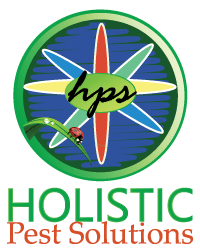Termites may be tiny, but they cause about $5 billion in damage to American homes each year. Yes. We said FIVE BILLION DOLLARS IN DAMAGE. The thought that these invasive insects might be silently eating away at one of the biggest investments you’ll ever make can certainly be disturbing. Why do those wood-munching monsters eat wood, you may wonder? Is their diet restricted to wood, or can these teeny tiny termites cause other kinds of damage in and around your home? Read our latest blog and find out what you need to know about termites.
NUTRITION FOR TERMITES
Termites may eat wood, but what they’re really after is the cellulose from which wood is made. Cellulose is the main component found in the cell walls of wood, plants and grass. It’s also the most abundant organic compound on Earth. Termites hardly ever stop eating. To feed their ever-growing colonies, they will devour anything that contains cellulose. Termites will eat lumber, books, magazines, sheetrock (or drywall), wallpaper and fabrics. In short, if you’re dealing with a termite infestation, more than the structure of your home is at risk. Anything made with wood or things derived from wood are potentially tasty treats for the termite. What you need to know about termites is that these tiny terrorists never tire of chewing. Let’s learn more.
HOW TERMITES DIGEST WOOD
Ever curious about how wood settles in the termite’s tummy? Termite digestion is actually a really complicated process. Termites can’t digest cellulose and extract life-sustaining nutrients without the help of one-celled protozoa and bacteria that live in their digestive tracts. These microorganisms break the cellulose down into simple sugars that keep their host termites alive. Interesting, huh?
See also Termite Inspection Benefits
WOOD TERMITES PREFER
We know you aren’t planning a dinner party, but having a curious mind, you might wonder what type of wood termites prefer to eat. Eastern Subterranean termites, the most common species of termite in Virginia, tend to nest in moist, underground conditions and prefer soft pine over hardwoods. Subterranean termites often leave a distinct pattern of damage behind, one that follows the grain of the wood itself. They also construct mud tubes and use them to forage up from their colony and into your home.
Formosan Termites, also found in our state and often referred to as “super termites,” are the hungriest, most aggressive and devious of the over 2,000 termite species known to science. They will chew through wood, flooring and even wallpaper undetected. We hope that between this blog and our very informative website, you have all of what you need to know about termites. Even if you don’t currently have termite activity, it’s a good idea to contact a termite professional for a consultation. Since termites feast 24/7, an infestation could cause a lot of damage in a very short period of time. Please consider contacting Holistic Pest Solutions to learn more about our treatment plans for termites, ants, mosquitoes or any other pests or give us a call at 434 842 1700. Whether you’re in Charlottesville, Waynesboro, or close by to either, Holistic Pest Solutions has the perfect plan for you. We’re mindful of our clients AND our Earth!
*Our Environmental Commitment: Holistic Pest Solutions is committed to the preservation of our environment. Our goal is to nurture the soils and plant life of lawns and landscapes. Utilizing holistic pest control practices that cause the least amount of impact on the environment.







